Biopharma companies, academia, patient groups, and the NIH are embracing translational medicine to increase the number of drugs that can be successfully brought to market.
The current process of translating a new discovery into a therapy is slow and expensive. The average length of time from discovery to approval of a new drug is more than 13 years, and 80% to 90% of drug candidates fail before they reach human clinical trials, according to the National Institutes of Health. Of those drugs that reach human trials, more than 30% fail because they are found to be harmful to human health, despite promising studies in animal and cell models.
In pharmaceutical research, this is known as “the valley of death," the gap that promising therapeutic candidates often fall into on the path from biological discovery to clinical trials.
Translational medicine — the integrated application of innovative pharmacology tools, biomarkers, clinical methods, clinical technologies, and study designs to improve the confidence of human drug candidates — aims to address this gap.
The National Center for Advancing Translational Sciences (NCATS), one of 27 institutes and centers at the NIH, was launched in December 2011 to  transform the translational science process so that new treatments and cures for disease can be delivered to patients faster and to provide an opportunity to forge a new paradigm for translational research that involves government, academia, industry, philanthropy, and patient advocacy groups.
transform the translational science process so that new treatments and cures for disease can be delivered to patients faster and to provide an opportunity to forge a new paradigm for translational research that involves government, academia, industry, philanthropy, and patient advocacy groups.
“We’re bringing together diverse teams of experts who can identify the key pieces that are needed for any given translational research program," says Joni Rutter, Ph.D., deputy director, NCATS. “These teams are figuring out what will enable the translation of a project that can progress to clinical 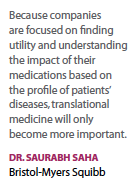 testing and ultimately move forward as a new therapy to help patients."
testing and ultimately move forward as a new therapy to help patients."
Dr. Rutter says NCATS has a library of more than 400,000 compounds, 2,500 of which are already FDA-approved drugs. About 40% of NCATS’ collaborators come from industry. “We have an office of strategic alliances to help us navigate the legal aspects and IT aspects of conducting research with industry collaborators, and we are organizationally structured for these partnerships and collaborations to happen."
NCATS has several programs aimed at addressing the fundamental issues involved in translational science. One such program is Bridging Interventional Development Gaps (BrIDGs), which enables research collaborations to advance candidate therapeutics for both common and rare diseases into clinical testing.
“This program enables collaborations to advance basic observations, clinical observations, or therapeutic candidates that have been studied across NIH into clinical testing," Dr. Rutter says.
“This program is for therapeutic candidates that have gone through a variety of preclinical tests and are ready to be proposed as INDs for regulatory approval to the FDA. The goal is to shepherd candidates through that last step in the valley of death."
Another initiative at NCATS is the Therapeutics for Rare and Neglected Disease Program (TRND), which specifically supports preclinical development of therapeutic candidates to treat rare or neglected disorders.
So far, the BrIDGs/TRND programs have helped to facilitate 38 IND filings. One such IND program is for metarrestin to treat metastatic 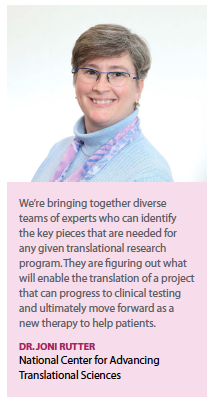 pancreatic cancer. NCATS worked in collaboration with scientists at Northwestern University and the National Cancer Institute to identify both a cellular target that is prevalent in metastatic cancer cells and a compound that inhibits the metastatic process.
pancreatic cancer. NCATS worked in collaboration with scientists at Northwestern University and the National Cancer Institute to identify both a cellular target that is prevalent in metastatic cancer cells and a compound that inhibits the metastatic process.
Another example of NCATS’ translational work is for a gene therapy for the treatment of aromatic L-amino acid decarboxylase (AADC) deficiency. The AADC enzyme is necessary for the production of important chemical messengers in the brain and nervous system. Children with the condition experience severe developmental delays, weak muscle tone, involuntary movements of the arms and legs, and seizures.
“We are very interested in this rare disease because it can help us identify factors that can be applied much more broadly to a variety of conditions," Dr. Rutter says. “The AADC gene is responsible for the final step of the synthesis of key neurotransmitters, specifically dopamine and serotonin, which are required for basic neural system function. Small molecules that aim to increase production of those neurotransmitters through other therapeutics such as monoamine oxidase just don’t work. This gene therapy approach is a way in which to deliver the human AADC gene to correct the underlying condition of this disease."
NCATS worked with Agilis Biotherapeutics, which is now part of PTC Therapeutics, to develop the adeno-associated virus vector. PTC plans to submit a BLA with the FDA in late 2019 followed by an MAA in Europe for the AADC deficiency gene therapy program with anticipated commercial launch in the United States in 2020.
Additionally, NCATS’ Clinical and Translational Science Awards (CTSA) program aims to strengthen the full spectrum of translational research. About 60 medical research institutions in 30 states and the District of Columbia are active members of the CTSA Consortium. Its goals are to accelerate the process of translating laboratory discoveries into treatments for patients, to engage communities in clinical research efforts.
“There is a struggle in terms of bringing the basic science or the clinical observations into a space where there is an intervention that’s tangible for 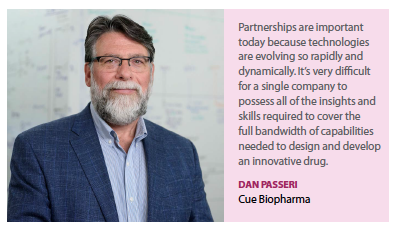 human health," Dr. Rutter says. “For all areas of translation, the goal is to address this specific challenge and bring those observations to an applicable fruition for human health."
human health," Dr. Rutter says. “For all areas of translation, the goal is to address this specific challenge and bring those observations to an applicable fruition for human health."
While the past few decades have brought enormous breakthroughs — advances such as the sequencing of the human genome, new ways to target therapies directly at cancer cells, and the ability to use stem cells to treat human disease — to better understand, prevent, diagnose, and treat many diseases, the ability to consistently translate these exciting new discoveries into products that can help patients is severely lagging behind the pace of discovery.
Experts say new therapies, such as gene and cell therapies, often require innovative approaches and strategies requiring translational medicine.
“While traditional small molecule drug development has a well-worn path, cell and gene therapies are still in the early days so we are forging new ground," says Rebecca Blanchard, head of translational sciences at CRISPR Therapeutics. “With the CRISPR platform, we encounter an engineering challenge on top of the traditional biology challenges. With that, the CRISPR platform is elegant and simple to use, and we are leveraging rapid learnings from other gene therapies."
A mindset that embraces “learn and confirm" efforts is very important in making translational efforts successful, Ms. Blanchard says. “It takes a principled approach to build translational science into the pipeline, into clinical trials, and to forward translate those findings, such as identifying new indications or drug combinations, and reverse translate them, such as identifying new edits that can be built into the next generation of therapies."
Precision medicine is an important part of drug development, and because companies are focused on finding utility and understanding the impact of their drugs based on the profile of patients’ disease, translational medicine will only become more important, says Saurabh Saha, M.D., Ph.D., senior VP, global head of translational medicine and site head for Cambridge, Mass., at Bristol-Myers Squibb.
BMS, like other biopharmaceutical organizations, is focused on giving its clinical teams the highest chance of success that a drug will work.
“This means identifying the right biomarkers so we can select the patients who would best benefit from a particular treatment path," Dr. Saha says. “Our organization spans activities that range from identifying and validating new drug targets early in discovery through confirming the 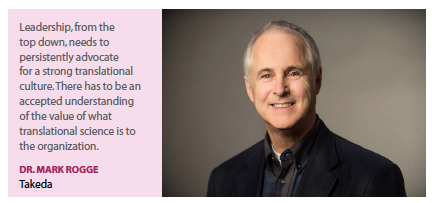 mechanism of action of our drugs as they move into the clinic. We also focus on activities that put the data packages together for those drugs to determine the patients who would probably best benefit from those drugs or combination strategies that could work with a particular drug."
mechanism of action of our drugs as they move into the clinic. We also focus on activities that put the data packages together for those drugs to determine the patients who would probably best benefit from those drugs or combination strategies that could work with a particular drug."
What is needed in translational medicine is trial readiness, says Petra Kaufmann, M.D., VP, R&D translational medicine, AveXis. “First, we have to have a good understanding of how the disease affects patients, how it interferes with their function, how it may even, in severe diseases, shorten life expectancy," she says. “We have to have good, natural history data sets, patient-level data sets. We have to have good outcome measures, not only outcome measures that are good for academic research, but outcomes measures that can be used in a regulatory context to chart how a patient feels and functions, and how this could be affected by the therapy."
Partnerships Critical for Success
Industry leaders say collaboration is essential to successful translational efforts. In fact, new models and approaches are needed to address the challenges of getting new therapeutic candidates to clinical development.
Biopharma companies realize the need to partner with leading researchers in academia and with patient organizations to focus on the invention and validation of novel measurement and disease models, which may require special technologies.
“It’s important to connect early on with those who have the expertise and experience in drug development efforts that focus on, for example, animal 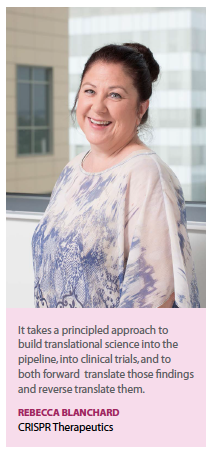 models, or outcome measures, or biomarkers," Dr. Kaufmann says.
models, or outcome measures, or biomarkers," Dr. Kaufmann says.
“Similarly, there are terrific patient organizations that are focused on the goal of developing treatments and that collaborate with academic investigators, as well as sit on company boards, or who work in other partnership areas to accelerate the process and to work on trial readiness."
BMS is one company that has external partnerships for translational medicine, as well as an integrated group of internal functional units that work seamlessly within the translational medicine organization.
The company has more than 100 wide-ranging partnerships for translational medicine. These span academic collaborations to collaborations with biotech startups to partnerships with vendors, CROs, and established companies that provide services to enable the company to test new technologies.
On the academic side, the company has created the International Immuno-Oncology Network, which is a group of 16 carefully selected immuno-oncology centers and investigators who are leaders in immunotherapy.
The company also has collaborations with academia for patient samples on cancers where BMS may not have a strong footprint, such as colorectal cancer or pancreatic cancer. For example, last year BMS announced a collaboration with Boston Medical Center to identify and analyze potential sensitivity and resistance markers in patients treated with standard-of-care checkpoint inhibitors. The study focuses on uncovering mechanisms associated with lack of response to immuno-oncology therapies, with the goal of identifying prognostic and potentially predictive biomarkers.
Dr. Saha also points to a partnership with PathAI, which is developing a technology that assists pathologists in making rapid and accurate diagnoses. “The technology allows us to see associations between tumor cells and immune cells that would otherwise have gone unnoticed by pathologists," he says.
Takeda Pharmaceutical Company is also expanding its translational capabilities significantly.
“We’re reaching much deeper into our early-stage research portfolio and working with our computational biologists to create systems pharmacology models that can be used by our discovery staff," says Mark 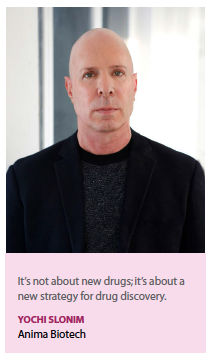 Rogge, Ph.D., global head of quantitative translational science at Takeda. “We’re trying to better understand the natural history of disease and through early clinical signals better understand whether or not a product will work once it gets into the clinic."
Rogge, Ph.D., global head of quantitative translational science at Takeda. “We’re trying to better understand the natural history of disease and through early clinical signals better understand whether or not a product will work once it gets into the clinic."
Dr. Rogge says Takeda leadership recognized the value of translational medicine several years ago. “We’ve been investing in this area, particularly in the enabling platforms," he says. “We’ve created a highly capable internal team of experts who drive our strategy. They bring significant laboratory and computational expertise to the organization. We also recognized that we needed to have partnerships with an external network of experts."
Dr. Rogge’s advanced modeling and simulations group has recently partnered with Takeda’s drug safety research and evaluation staff to forecast human risk across certain organ systems for its early pipeline. “We want to identify and remove high-risk products from our pipeline before they even get close to being in a human dosing situation," he says. “Although this effort is only several months old, we’ve made excellent progress in terms of defining the focus, the potential value to the pipeline, and the technologies that are needed to improve the selection of drug candidates."
Externally, Takeda has several collaborations with academic and nonprofit organizations. For example, in oncology, the company is partnering with the University of Navarra in Spain for minimal residual disease profiling in cancer therapy.
In neurology, the company is conducting reverse translation work with the Montreal Neurological Institute and the Center for iPS Cell Research and Application (CiRA) at Kyoto University using phenotypic screens with patient-derived iPSCs. With the University of Florida, Takeda is working on Parkinson’s disease functional progression mapping and item response theory in PD symptomology. Takeda also has partnered with the Foundation for the National Institutes of Health for imaging biomarker identification and qualification and with UK BioBank as part of their big data initiative.
What makes these partnerships successful, Dr. Rogge says, is that everyone comes to the table as an expert. “There are no hierarchies on these teams. The collective value that comes from everyone is so much greater than any individual, or even a couple of individuals who are on the team."
Dr. Rogge adds that leadership needs to persistently advocate for a strong translational culture. “Bottom up, the teams have to provide insightful data-driven recommendations and proposals and opinions to the larger teams and to senior management," he says.
He suggests companies need to move away from a “just-in-time" mentality. “Translational science cuts across all of R&D — it’s a continuum," Dr. Rogge says. “There needs to be continuity. Teams need to think about the future questions to be answered and how to design studies to gather and analyze data to answer those questions. This process produces a more seamless continuity in our work and the value of translational science as a whole will become much more evident to the larger R&D organization."
Partnerships are strategically important because technologies are evolving so rapidly, says Dan Passeri, president and CEO of Cue Biopharma, a clinical-stage biopharmaceutical company engineering injectible biologics to selectively engage and modulate disease-relevant T cells for the treatment of cancer and autoimmune diseases. “It’s difficult for a single company to possess all of the insights and skills to cover the full bandwidth of capabilities needed to design a drug," he says.
Mr. Passeri says Cue Biopharma has partnerships with academic research groups recognized for their areas of expertise in drug development. “These partnerships are extremely important in that they increase our access to skills and capabilities that complement our own core capabilities and they increase our bandwidth and resources."
The company’s CUE-100 series of drug candidates designed using their proprietary platform Immuno-STAT (Selective Targeting and Alteration of T cells) to selectively engage tumor-specific T cells with interleukin 2 (IL-2), was born out of a collaboration with the Albert Einstein College of Medicine.
For Cue Biopharma, the challenge was designing a therapeutic that would selectively activate tumor-relevant T-cells. The company’s lead product, CUE-101 is in a Phase I trial as a potential treatment for HPV16-associated cancers.
“We created a biologic that is injected directly into the patient’s blood system and that biologic then interacts with and modulates the selective targeted T-cell population," he says. “We wanted to get it right with our first molecule."
Anima Biotech is using a different approach for drug discovery.
“The approach of directly going after a target protein has been used and overused for so many years but with so many proteins being hard targets or undruggable, it is coming to an end," says Yochi Slonim, co-founder and CEO of Anima Biotech.
Anima Biotech is advancing its Translation Control Therapeutics, the first platform for the discovery of small molecule drugs that specifically control mRNA translation as a new strategy against hard and undruggable targets in many diseases. Anima’s proprietary technology enables visualization and monitoring of target protein translation via pulses of light emitted by ribosomes. The fully automated high-throughput screening system discovers small molecules that modulate the light, as they decrease or increase the target protein’s production. In addition, the discovered small molecules are more tissue selective and therefore safer than conventional small molecule drugs.
Anima has a $1 billion collaboration with Lilly to screen targets using its platform. “We are collaborating with Lilly around several diseases that have seen no progress in the clinic for nearly 30 years," Mr. Slonim says. “Anima represents a new strategy for Lilly. It doesn’t represent a new molecule or a new solution. We are running our platform technology against their targets."
Anima is also developing an internal pipeline across multiple therapeutic areas with high unmet need and hard targets. Current programs are in fibrosis (inhibiting the synthesis of Collagen type I), viral infections (respiratory syncytial virus – interfering with viral protein synthesis), oncology (C-Myc translation inhibitors), and Huntington’s disease (monitoring mutant Huntingtin translation pausing).
Another company in this space is OSE Immunotherapeutics, a clinical-stage biotechnology company focused on developing therapies to control the immune system for immuno-oncology and autoimmmune diseases. While the company is working to develop Tedopi for non-small cell lung cancer alone, OSE is working with GERCOR, a network of 300 cancer centers in France dedicated to clinical trials in solid cancers, to investigate Tedopi alone or in combination with a PD-1 in pancreatic cancer.
Nicolas Poirer, Ph.D., chief scientific officer, OSE Immunotherapeutics, says a different approach is needed, especially in oncology where checkpoint inhibitors don’t work for many patients.
“We use a different model to answer specific questions and to see what is the best target to solve a problem, and then we can return to the patients," he says. “We call this a bed-to-the-bench and then the bench-to-the-bed approach."
At CRISPR Therapeutics, the company is leveraging partnerships to learn more about the gene-editing platforms, novel methods of delivery, and new technologies that can be applied to biomarker research.
Ms. Blanchard says CRISPR Therapeutics leverages every experiment and every clinical trial to learn as much as they can about a therapy and how patients may respond. “Our teams work cross-functionally to pose novel questions, test them, and then carry those hypotheses through to our clinical trials," she says. “Our clinical trials are heavy with biomarker research because we need to understand the novel mechanisms of therapeutic response and resistance."
An example, she says, is CTX001, an investigational ex vivo CRISPR gene-edited therapy that is being evaluated for patients suffering from transfusion-dependent beta thalassemia or severe SCD in which a patient’s hematopoietic stem cells are engineered with the aim to produce high levels of fetal hemoglobin in red blood cells. CTX001 is being developed in conjunction with Vertex Pharmaceuticals.
CRISPR Therapeutics is also embarking upon a clinical trial for its CAR T cell therapy immuno-oncology program as a wholly owned effort. “Our immuno-oncology discovery scientists are very facile at engineering new CAR T cells, and we look to leverage clinical trials to learn about how our medicines are acting, at the molecular level, and turn those findings into new therapies," Ms. Blanchard says.(PV)
~~~~~~~~~~~~~~~~~~~~~~~~~
Nonprofit Organizations and Translational Medicine
 Lynn O’Connor Vos
Lynn O’Connor Vos
Muscular Dystrophy
Association
Nonprofit patient organizations play a significant role in the ecosystem of health, much more so than they did 10 years ago.
According to Lynn O’Connor Vos, president and CEO of Muscular Dystrophy Association, forward-thinking philanthropic and patient organizations can play a critical role in stimulating research in under-resourced disease areas.
“The nonprofit plays a significant role in the ecosystem of health, much more so than 10 years ago," Ms. O’Connor Vos says. “Nonprofits assist companies and academic institutions to bring forward the patient voice and make sure certain drugs become available as quickly as possible."
The MDA provides $16 million a year for neuromuscular research, and in total has sponsored about $1 billion mostly toward academic research and basic science.
Ms. O’Connor Vos says the organization is at an inflection point and is assessing how the group allocates funding.
The MDA has an academic portfolio as well as an MDA Venture Philanthropy (MVP) group. MVP is the Muscular Dystrophy Association’s drug development program, which operates within MDA’s Translational Research program. The MVP evaluates and makes targeted investments in for-profit and nonprofit companies and academics developing therapeutics for neuromuscular diseases.
“One of the areas this group has excelled in is genetic medicine, and we are going to continue funding research in this field," Ms. O’Connor Vos says.
Additionally, MDA sponsors clinics at the 150 top care centers and hospitals in the United States. “We’ve organized the care centers to act more like a network so they are in a better position to do clinical research," Ms. O’Connor Vos says.
The organization added a program called MOVR, which is a data hub that was developed with IQVIA. MOVR Care Centers began by collecting data on the four diseases that formed the basis of the MDA U.S.
Neuromuscular Disease Registry: amyotrophic lateral sclerosis; Becker muscular dystrophy; Duchenne muscular dystrophy; and spinal muscular atrophy. Three additional diseases were added to MOVR in 2019:
Facioscapulohumeral muscular dystrophy; limb girdle muscular dystrophy; and Pompe disease.
“Our MOVR Care Centers capture clinical data and patient reported outcomes as well as genetic data," she says. “There have been a lot of failed clinical trials in muscular dystrophy because not enough is known about the natural history of these diseases."

















